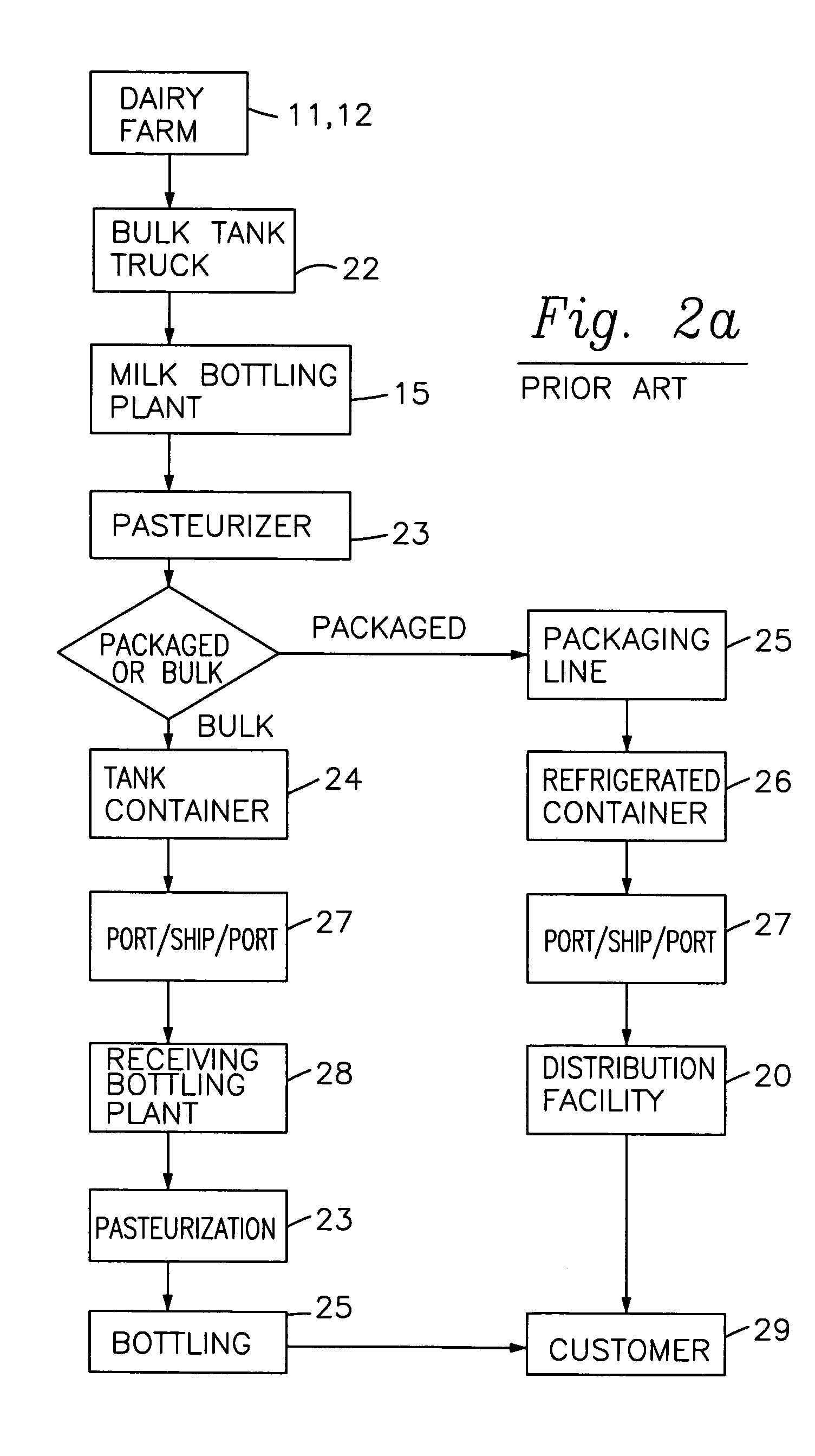Extended shelf life and bulk transport of perishable organic liquids with low pressure carbon dioxide
a technology of carbon dioxide and organic liquid, applied in the field of extended shelf life and bulk transportation of perishable organic liquids with low pressure carbon dioxide, can solve the problems of not being able to reach all markets in time, impose additional costs or limitations, and be not sufficiently rapid to achieve all markets, so as to achieve the effect of prolonging the li
- Summary
- Abstract
- Description
- Claims
- Application Information
AI Technical Summary
Benefits of technology
Problems solved by technology
Method used
Image
Examples
examples
[0066] The first example is a laboratory scale experiment to investigate the effect on raw milk spoilage and pathogenic microbia of holding raw milk under positive CO2 pressures that do not result in precipitation of milk solids. Changes in total Lactobacillus spp., lactose fermenting and non-lactose fermenting gram-negative bacteria, Escherichia coli, thermoduric bacteria and SPC were examined as indicia of potential milk quality and safety.
Test System Design
[0067] The apparatus for pressurizing and holding raw milk samples is shown in schematic form in FIG. 9 and consisted of two 13-ml stainless steel 1.27-cm OD cylindrical vessels 60, 61, one vessel 60 was pressurized while the other served as a control 61. Compressed and filtered CO2 from a high-pressure tank 62 was used (Empire Airgas, Inc, Elmira, N.Y.). The system consisted of pressure regulator 63, a fine metering valve 64 (NUPRO Company, Willoughby, Ohio), an on-off valve 65 (Circle Seal, Anaheim, Calif.) and a check val...
example 2
[0091] This second example was an experiment designed to confirm the preliminary results of the first example on a commercial or bulk scale.
Test System Design
[0092] The apparatus pressurizing and holding raw milk samples consisted of a 5300 U.S. gallon (20,000 liter) food grade, insulated, pressure vessel shipping container of the model HO4 type utilized by Agmark Foods, Inc. Compressed and filtered CO2 from high pressure tank was used, including a Praxair inline 3A sparger. The Agmark shipping container was sanitized on Aug. 4, 2004. The following day, the tank was pre-chilled with a spray of CO2 and filled with 3,291 U.S. gallons of fresh raw milk obtained from the Cornell University Teaching and Research Center Bovine Heard (T&R Center; Dryden, N.Y.) on Aug. 5, 2004. The raw milk from the T&R Center was received less than 12 hours after milking and was introduced from a holding tank into the pressure vessel at a temperature of approximately 1 to 2° C. Prior to filling the pres...
PUM
 Login to View More
Login to View More Abstract
Description
Claims
Application Information
 Login to View More
Login to View More - R&D
- Intellectual Property
- Life Sciences
- Materials
- Tech Scout
- Unparalleled Data Quality
- Higher Quality Content
- 60% Fewer Hallucinations
Browse by: Latest US Patents, China's latest patents, Technical Efficacy Thesaurus, Application Domain, Technology Topic, Popular Technical Reports.
© 2025 PatSnap. All rights reserved.Legal|Privacy policy|Modern Slavery Act Transparency Statement|Sitemap|About US| Contact US: help@patsnap.com



